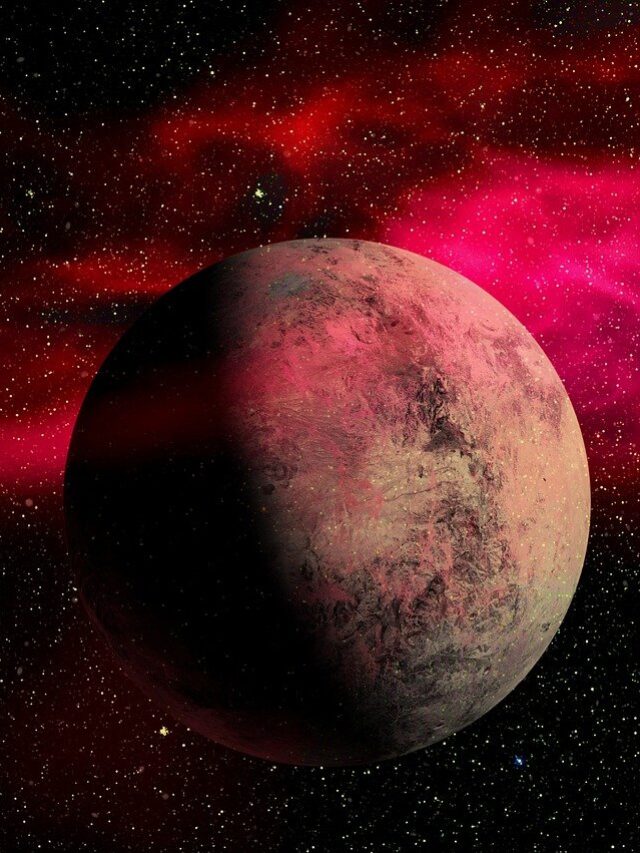Pancake Domes on Venus are unusual flat-topped volcanoes that may be shaped by both dense lava and a flexible crust. A new study brings fresh insights into how these formations came to be.

Pancake Domes on Venus May Be Formed by a Bendy Crust and Dense Lava
Pancake Domes on Venus are some of the strangest and most eye-catching features found on our planetary neighbor. These wide, flat, volcano-like structures are found all over the surface of Venus. For years, scientists have tried to understand how these odd formations came to be. A new study now offers a clearer explanation: it might not just be the lava itself, but also the way Venus’ crust bends under pressure.
What Are Pancake Domes on Venus?
Pancake Domes on Venus are giant, round volcanic features that can stretch for dozens of miles across but only rise about half a mile high. They look like massive pancakes — wide and flat with steep edges. More than 1,600 large volcanoes or volcanic features have been spotted on Venus, but these pancake domes stand out due to their unique shape.
Scientists believe these domes form from thick, sticky lava that spreads slowly across the planet’s surface. Because the lava flows so slowly, it spreads out evenly before cooling and hardening into a round, pancake-like shape. This slow-moving lava behavior is known in science as a viscous gravity current.
Why the Lava Alone Isn’t Enough to Explain the Domes
While sticky lava is clearly part of the story, researchers now believe that lava alone doesn’t fully explain the formation of Pancake Domes on Venus. A new idea suggests that the planet’s upper crust — the outer layer of Venus — also plays a major role.
Dr. Madison Borrelli, a postdoctoral researcher at Georgia Tech and lead author of the new study, believes the flexibility of the crust is a missing piece in the puzzle. According to her team, Venus’ crust may act a bit like the skin of an orange — when something heavy pushes down on it, the surface bends or dimples.
This bending, or flexure, may happen when heavy lava builds up and causes the crust to bulge outward around the dome. This would create a rim or raised area that traps lava and helps form the steep edges of the dome.
Studying the Narina Tholus Dome
To test this theory, the research team studied one particular Pancake Dome on Venus — the Narina Tholus. This giant dome is around 88.5 miles wide and sits on the edge of a larger structure known as the Aramaiti Corona.
The team used detailed radar data collected during NASA’s Magellan mission in the 1990s. With this data, they created a computer model of Narina Tholus. Then, they ran simulations of lava flowing across both stiff and bendy crusts to see which version produced domes that looked most like the real thing.
What the Simulations Revealed
The study showed that Pancake Domes on Venus are more likely to form on a flexible crust rather than a rigid one. When lava flowed across a bendy surface in the simulation, the result was a dome with a flat top and steep edges — just like Narina Tholus. The surrounding crust bulged upward, stopping the lava from spreading out too far and forcing it to pile up instead.
This bulging effect helps explain the distinct shape of the pancake domes and supports the idea that the planet’s crust plays an important role in shaping them.
The Lava’s Density Is Important Too
However, the shape of the dome wasn’t only affected by the crust. The Pancake Domes on Venus also depend on the density of the lava. Lighter lava didn’t create strong enough bulges in the crust. Only when the lava was very dense — over twice the density of water — did the model produce both the dome shape and the surrounding crustal bulge that matched the real Narina Tholus.
What Kind of Lava Is Found on Venus?
The study couldn’t determine the exact type of lava that created the Pancake Domes on Venus, but it raised some interesting questions. Most volcanoes on Venus are thought to erupt basaltic lava, like what you’d find in Hawaii. However, the team couldn’t rule out other kinds of lava like rhyolitic or andesitic, which are thicker and more explosive, like those from Mount St. Helens.
Finding more than one type of lava on Venus could mean the planet had a more complex geological past — possibly involving water or more Earth-like tectonic activity.
What’s Next for Venus Research?
One limitation of the current study is that it only focused on one dome, Narina Tholus. To confirm their theory, scientists need more high-resolution data from other Pancake Domes on Venus.
Fortunately, NASA’s upcoming VERITAS mission is set to explore Venus with new radar tools and topographic instruments. This mission will give scientists a much better view of Venus’ surface and help answer lingering questions about how these domes formed.
With more data, researchers will be able to confirm if the combination of dense lava and a flexible crust is responsible for all Pancake Domes on Venus — or if other factors are also involved.
Conclusion: Venus Still Has Stories to Tell
Pancake Domes on Venus are more than just geological oddities. They might be key to unlocking secrets about the planet’s inner structure, volcanic history, and possibly even the role of water in its past. Thanks to new research and upcoming space missions, scientists are finally getting closer to understanding how these giant “pancakes” formed and what they reveal about one of our solar system’s most mysterious planets.
Related: